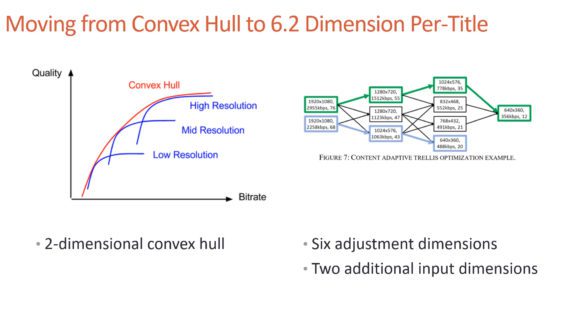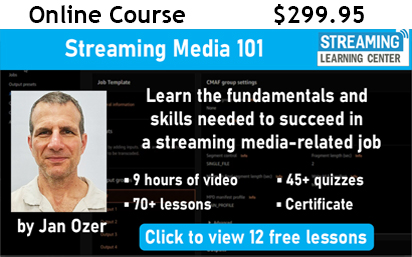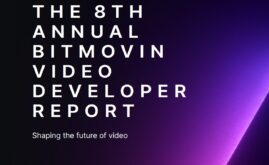This updated lesson was just added to the course Streaming Media 101: Technical Onboarding for Streaming Media Professionals. It details the evolution of per-title encoding from simple optimization technologies to complex, AI-driven systems. It’s an example of the technical perspective the course provides and our commitment to continually updating course content. Enjoy.
Per-title encoding customizes the encoding parameters of the encoding ladder for the characteristics of the video file. The original per-title implementations were optimization technologies like Beamr/CRF that adjusted only the data rate of the file (1 dimension).
In December 2015, Netflix launched per-title encoding using a brute force technique that customized the number of rungs in the ladder, rung resolution, and data rate (3 dimensions).
In 2018, companies like Brightcove started considering connection and device data when creating encoding ladders (3.2 dimensions). In 2020, Ateme added support for frame rate, dynamic range, and color gamut (6.2 dimensions).
This video tracks the progression of these technologies and details their impact. You can download the slide deck below.
 Streaming Learning Center Where Streaming Professionals Learn to Excel
Streaming Learning Center Where Streaming Professionals Learn to Excel










